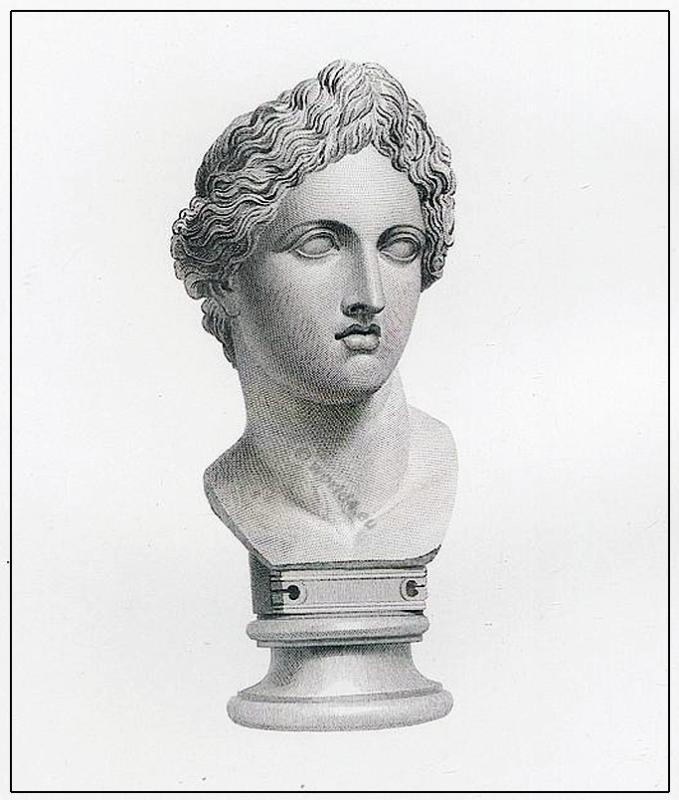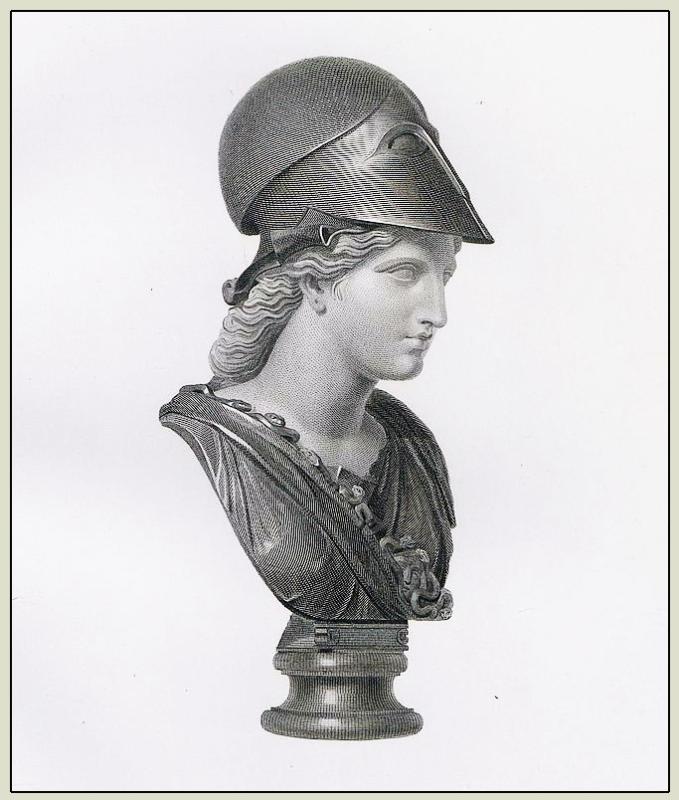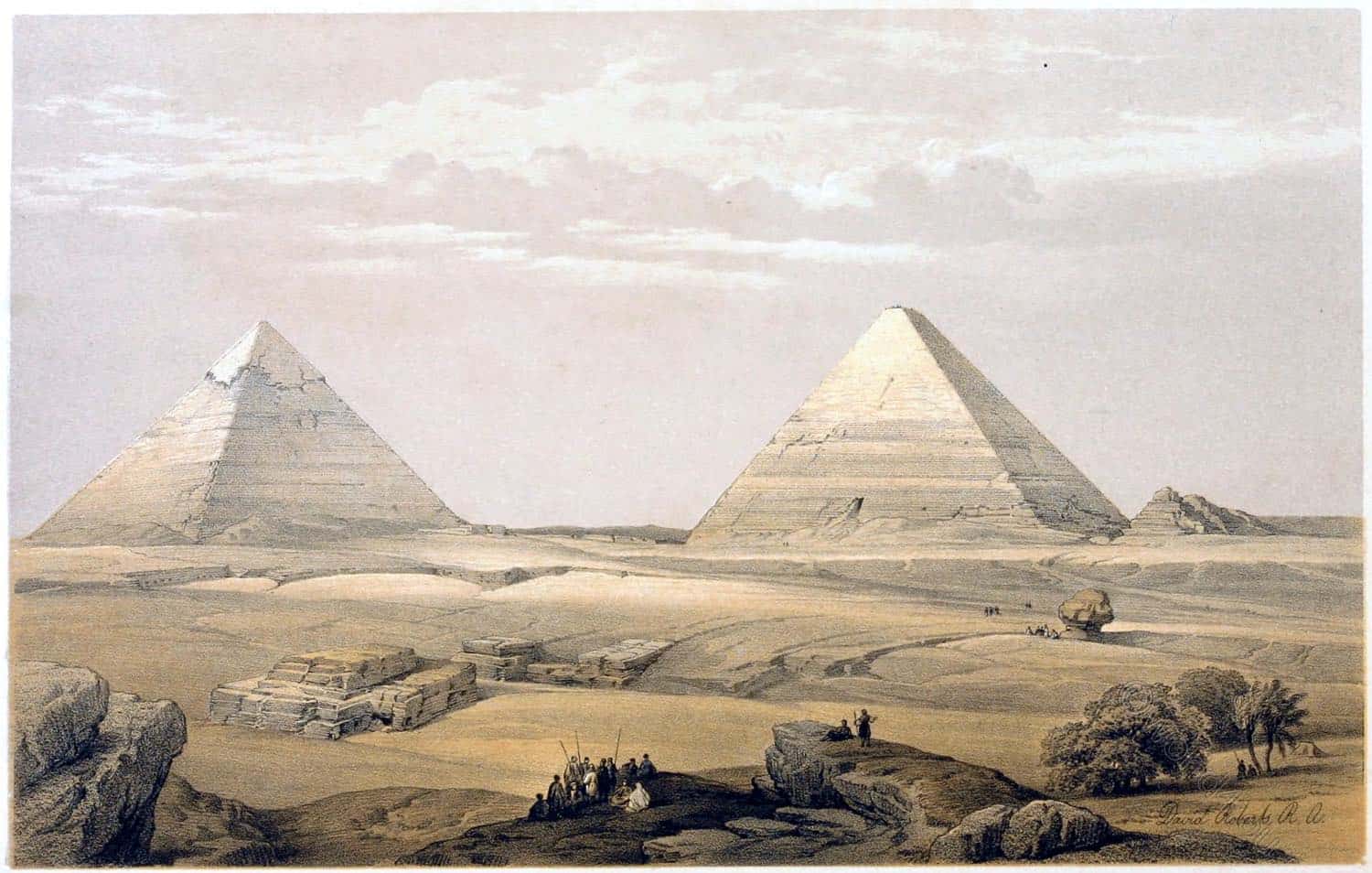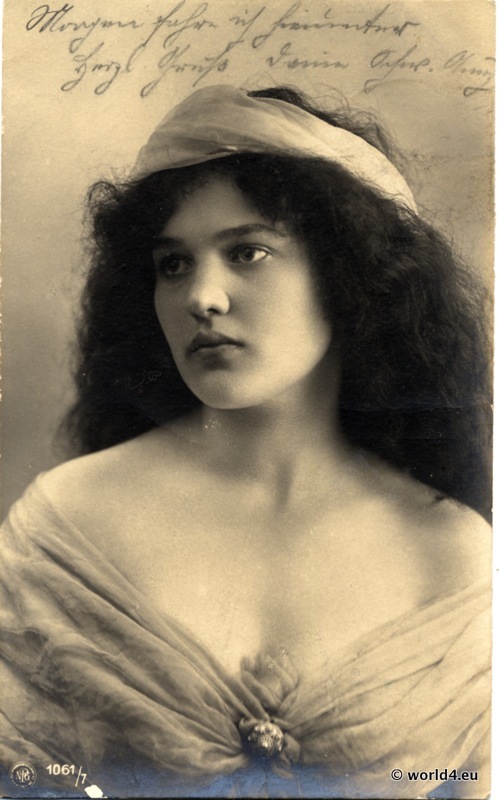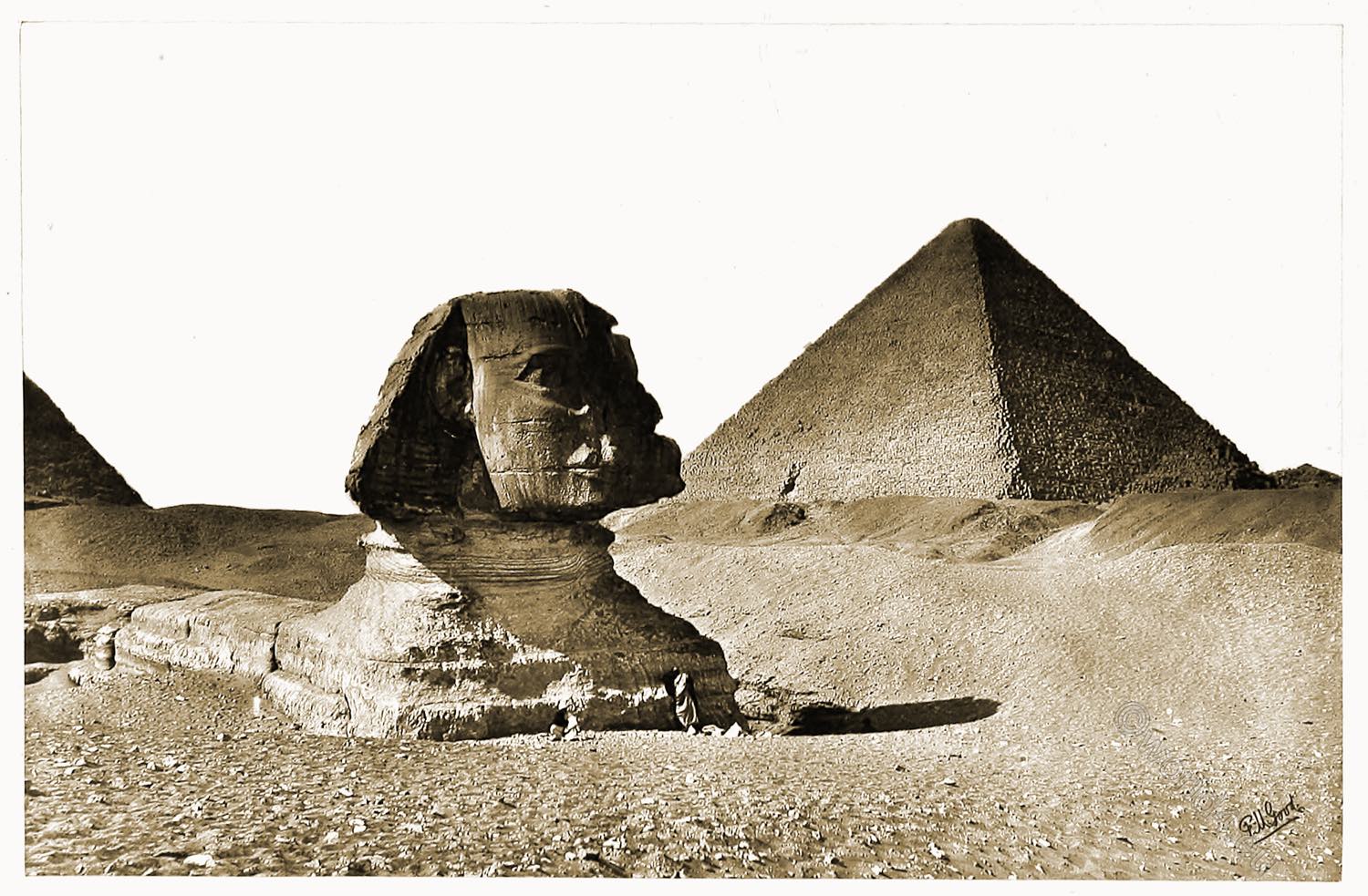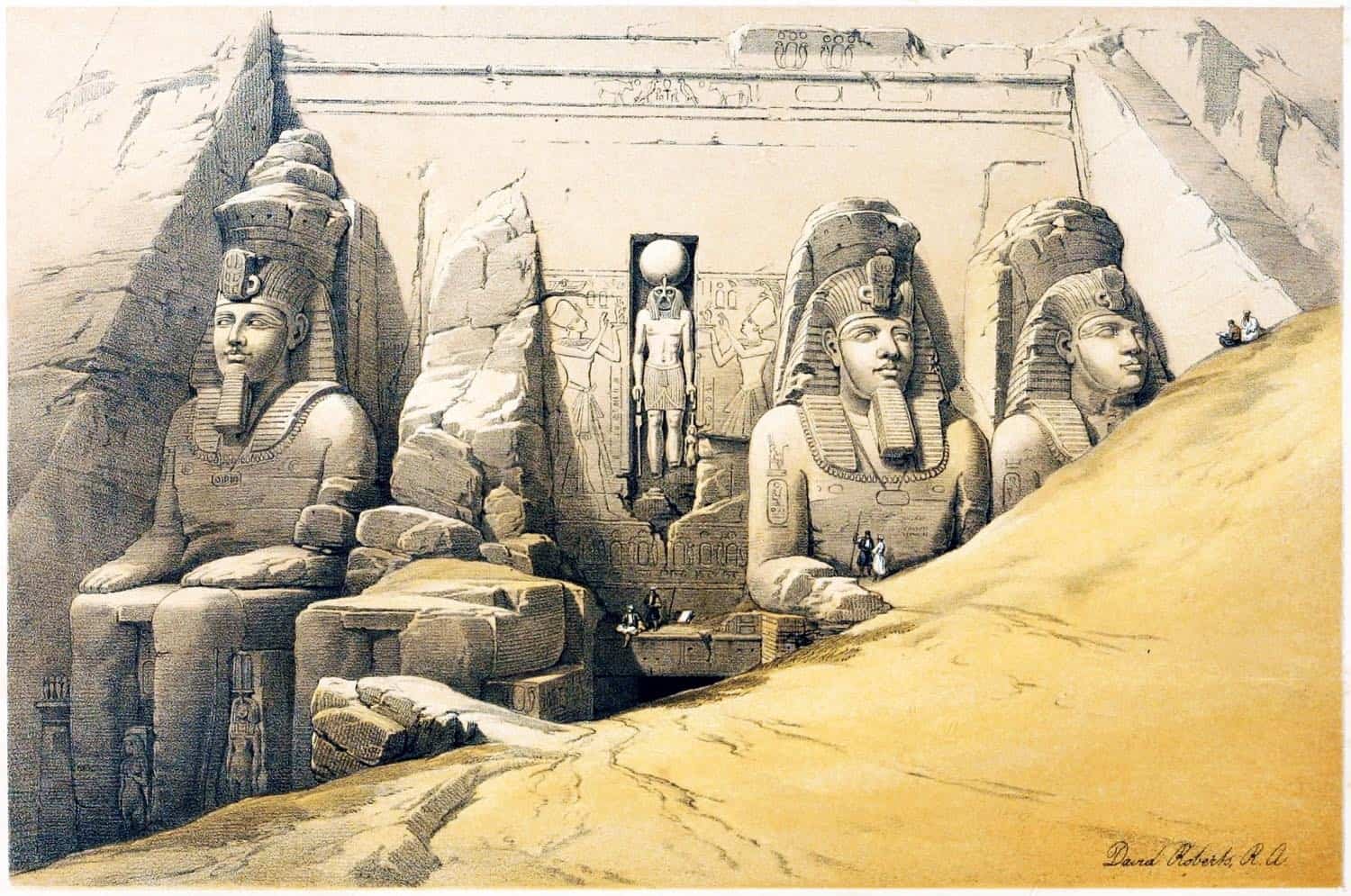BUST OF APOLLO.
Bust of Apollo crowned with a narrow diadem; a plaited tuft of hair is in the middle of the forehead, and the hair behind is tied in a knot. The character of this bust is of great beauty. Winckelmann speaks of it in his Monumenti Antichi Inediti, and says that it possesses a very high degree of beauty, although it might be wished, he adds, that there was somewhat more grace in the mouth, the angles of which are so deep as to give an appearance of hardness.
The distinguishing characteristic of the head of Apollo is the manner in which the hair is represented. Generally, it is parted at the crown, and gathered off to the side of the forehead, fallino- in waves down on the neck. The type here represented is probably derived from that of Scopas, the chief of the later Attic School, in which Apollo appears as a youth with an oval, but somewhat elongated countenance, the hair being gathered up, over the apex of the forehead, in a knot or bow, called Apollo Sauroctonos. The bronze statue of Apollo procured by Mr. Townley, and now in the British Museum, has the hair treated in the same manner.
It is probable that this bust belonged once to a statue similar to one engraved in the Museum Capitolinum, (1) and generally known as the Apollo Citharcedus. In that statue, Apollo rests his right arm on his head; a position which may be inferred also to have been that of the figure from which the present bust has been taken ; a depression being perfectly distinguishable on the top of it, on which the arm may have rested. It may also be stated that the character and arrangement of the hair bears a striking resemblance to the Apollo in the Tribune at Florence, while the earnest expression of the countenance, and the position of the neck, bent slightly to the left, recall the attitude of Apollo Pythius, called by Müller Apollo Callinicus. (2)
This bust was obtained by Mr. Townley from Cardinal Alexander Albani in the year 1773, upon its removal from the trunk of a figure of Bacchus, to which it had been improperly attached. It was supposed by Mr. Townley to be of the time of Praxiteles. There is however no good reason for considering it of Greek workmanship at all, and it is much more probably a copy, executed in good Roman times, from some earlier Greek work. The head only is antique, and of this the nose has been restored, as have been also the tuft of hair over the forehead, and that on the back part of the head. It is in Parian marble, and in height 1 foot, “without the restored portion.
(1) Mus. Capitol., Tom. iii. fab. 13. Mus. Prancais, Tom. i. PL 17. Clarac, PI. 480, No. 921 A. Compare also Gori, Museum Etruscum, PI. 124.
(2) 4 Mliller, PI. xi. No. 124. Of the many specimens published by Clarac none are exactly like this head. The nearest would seem to be one at Rome in the Coll. Vescovali (Clarac, PL 479, No. 919), one in the Mus. Chiaramonti (Clarac, PL 495, No. 963), and the so-called Apollo Pythius in the collection at Holkham (Clarac, PL 494 B. No. 912 F.).
Source: A description of the collection of ancient Marbles in the British Museum by Combe Taylor, London 1861.
Related
Discover more from World4 Costume Culture History
Subscribe to get the latest posts sent to your email.

